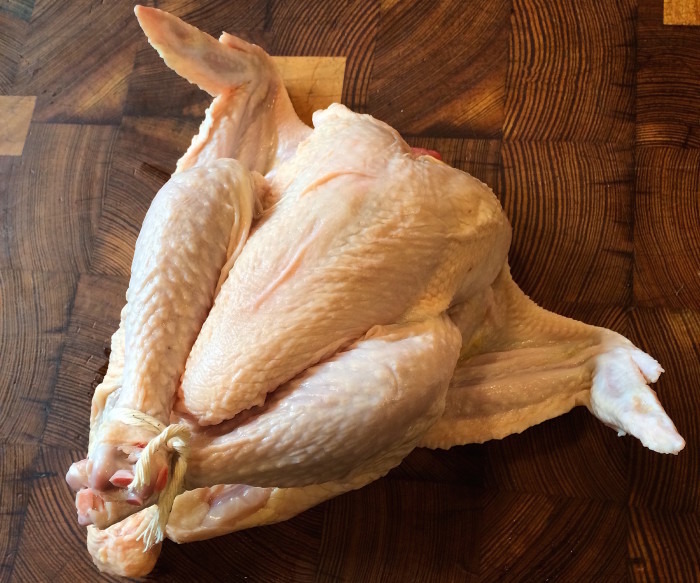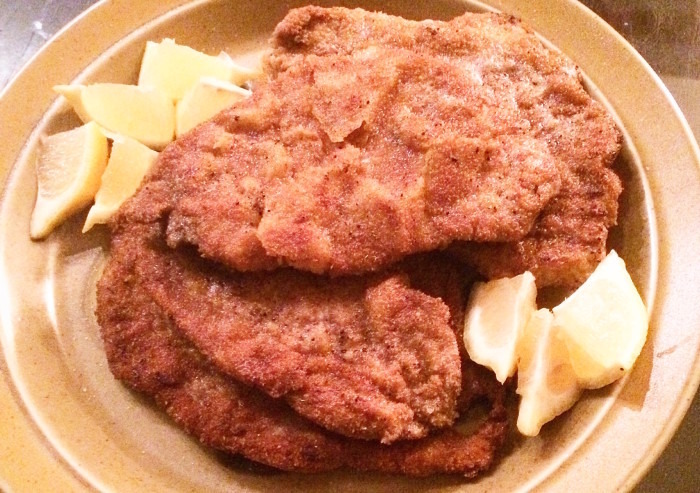The Best Cuts Of Meat To Braise, Roast, Grill And Fry
Food Republic's new column, Ask Your Butcher, seeks to answer FAQs in the world of butchery. Ethically minded butcher Bryan Mayer — former founder and co-owner of Philadelphia's Kensington Quarters, a full-service restaurant, bar, butcher shop and classroom — will tackle a pressing issue facing both meat buyers and home cooks in each column. Next up, Bryan explores the best cuts of meat for various cooking methods.
Most meals in my house don't start out with a particular protein we're going to cook. It's more like, "I feel like braising something tonight, you?"
"Hmmmm, how about a roast?"
And so begins the dance of which method we'll choose. The protein is easy because over the years, we've established our "go-to's" for each method. This list certainly isn't definitive, but it's what I like and, more importantly, what's easy!
The Braise
Without question, braising is my favorite method. Not only are you cooking cuts that traditionally have more flavor — especially if they are of the non-industrially raised type — but because of the cooking time, you're allowing more flavor to be infused with the meat. The same goes for some veggies, too. On top of that, it just makes your home smell incredible for most of the day.
So what are we braising? Picnic hams. Unlike the butt, which sits higher on the shoulder and can be roasted or braised, the picnic ham is a bit of a one-trick pony — but a delicious one. Slathered with a mix of salt, pepper, garlic, oregano, olive oil and some vinegar, you'll need little more than time before you can taste pork perfection. I recommend marinating overnight, just to allow those flavors to penetrate a bit. And if you have a good butcher — see me if you don't — have him or her cut back the skin just far enough to make a flap. One hour at 400°F will make sure that skin is almost as good as crispy pata. 300°F for a few more hours, say four to six, depending on the size, and you're ready to go. If you're not sure, test with a fork to see if it shreds. If you've got a thermometer handy, you're looking for an internal temp of about 185°F.
One more tip: Make sure it's as close to room temperature as possible before cooking. If it's not, plan on increasing your cooking time significantly.
The Roast
If the picnic ham didn't tip you off, maybe my selection for roasting will: I like big cuts of meat. And it's not because I'm some gluttonous carnivore — quite the contrary. Reduction in portion size and the consumption of cleaner, healthier meats is what we're all about here. Who has time these days for all this cooking? We're all busy with work and kids — that's why I like to front-load my cooking in the beginning of the week.
We're roasting bottom round and eye round. These two cuts are great for a classic roast beef. And while typically a lean cut, you should see bottom round with a nice fat cap. You'll want that — it's flavor. For some reason, lots of butcher shops remove all the fat from their eye rounds. Don't ask me why, and don't buy that one. Like the bottom round, you'll want a nice fat cap to add to the flavor. Again, the cooking for these is supersimple. I like salt and pepper, overnight if you can, tied (either by you or your butcher), a few pats of butter, and if you can get a couple of marrow bones to toss in there, they add great flavor as well. I like to roast at no more than 300°F, as it lends itself to more uniform cooking. Rare! We're talking 120°F internal temperature (use those thermometers). You'll let it rest for about ten minutes and it should residually cook to about 125°F. Don't worry what the department of health says about internal temperature here — they don't have jurisdiction over your house or your taste buds...yet.

The Grill
If you're like me, then you grill year-round. Most people don't. They have more sense than to stand outside in freezing temperatures just because they want some smoky flavor. I'm not most people. But it's June, and I think you're in the clear. And that means the rest of you can stop roasting chickens in the oven and start tossing them on the grill. I'm not talking about your standard BBQ chicken pieces here — this is whole-bird stuff. Spatchcock! Or you could just say butterflied. Either way, you or your butcher will remove the backbone with a knife or kitchen shears. Make sure you're on either side of the spine or you'll never cut through. I also like to remove the keel bone, which is part of the sternum. Any good butcher should be able to do this easily. Your bird will rest flatter on your grill.
Flatter means you'll get a chicken that cooks more evenly. That's right — legs, thighs and breasts all playing happily together and cooking evenly. You'll want to set up your grill for a hot zone/cool zone, coals-to-one-side situation. I like to start my bird off slow, skin up, on the cool side. That way you'll give the fat time to render slowly and lose less moisture. When you're about 20°F from the 165°F mark, move it over to the hot zone and give that skin a good sear!
A few tips: I like grilling larger birds. You can go small, but just know that you'll be adjusting your cooking times. Larger birds can take close to an hour before they're ready to be flipped. Spend a few bucks and purchase a probe thermometer with a temperature-resistant cable — it'll take all the guesswork out of it. And finally, use a skewer and pierce through one side of the leg to the other. This will help the bird remain flat and in contact with the grill surface as it cooks.

The Fry
I'm not sure if this would be a pan-fry or a shallow-fry, but we're back inside and we're cooking pork again. Schweineschnitzel, to be exact. I think a butcher case devoid of pork cutlets is a lonely, empty place. They are so versatile, so tasty, and not boneless, skinless chicken breasts. Dip them in flour, egg and, lastly, bread crumbs. All that's left to do is fry and eat. It really is that simple.
Wiener schnitzel is delicious, don't get me wrong. But ethically raised veal is hard to find. I like my pork schnitzel cut from the top round muscle off the ham. It's lean, but you're going to fry it in lard. Yes, that's from a pig, too. If your butcher is a whole-animal shop, they should have this.
Two more tips for you here: Don't let those cutlets sit around after you've coated them in the bread crumbs — fry them immediately for maximum crispiness. And watch the temperature of your lard, as you're looking for around 330°F.
So many cuts, so many methods! It's a good thing I've got some free time on my hands.

